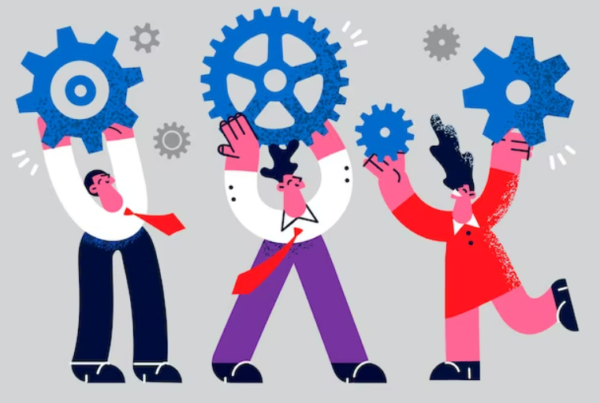Through effective HR practices, a cohesive HR strategy, and careful management of the bargaining/engagement relationship, positive employee relations empower managers and employees.
Introduction
Positive employee relations can help managers grow by establishing clear procedures for dealing with grievances, discipline, and other issues, as well as ensuring that managers are taught in best practices. It encourages communication that promotes shared understanding and decision-making clarity. It also recognizes that, even when conflict happens, the organization’s operation is a collaborative endeavor with mutual dependencies and interests.
- Employees have a right to agreed-upon standards of protection and opportunity, as well as a responsibility to agree to change and work for the organization’s prosperity. • Employees have a right to agreed-upon standards of protection and opportunity, as well as a responsibility to agree to change and work for the organization’s prosperity.
It’s all about these things when it comes to good employee relations:
- Continuous and targeted communication
- Employment procedures (including grievance and disciplinary procedures)
- Negotiating approach (based on mutual needs)
- HR culture (based on marketplace success)
Employment procedures are in place to deal with problems that develop in the workplace, and all employees will face issues that they are concerned about at some point. This might be due to a variety of factors, including coworker behavior, boss attitude, Company policy implementation, stifled goals, and a variety of other factors. Even the most ideal workplaces can leave employees feeling alone, lonely, demotivated, and frustrated. Recognizing the importance of healthy employee relations, a competent organization will ensure that negative feelings do not remain and fester by promptly and fairly resolving the employee’s complaint at the lowest possible level within the organization. The Consequences of Poor Employee Relationships The following are some of the possible effects of a bad employee relations climate:
- Significantly more use of management time on banal operational topics
- Greater use of representatives or employment forums, even on trivial work-related issues
Poor teamwork and integration of work procedures - Employee absenteeism
- Employee turnover
- Litigation
- Adversarial, combative, poor trust relationships between management and personnel with no clear solutions
Positive Employee Relations Tools
Employee relations issues are at the top of many companies’ to-do lists. Employee disputes can quickly escalate into emotionally charged and resource-intensive battles of will. We apply our knowledge to assist organizations in developing a variety of tools to aid in the development of a strong employee relations culture.
1. The ability to lead. Setting direction, communicating the organization’s values, establishing employee expectations, and providing support and honest feedback are all areas where leadership may have the greatest impact on strong employee relations.
2. Participation The importance of engagement in the workplace cannot be overstated. The required abilities and behaviors should be part of the management/employee interaction, as well as their training and development and duties, especially for the manager.
3. Methodologies Managers and staff are guided by the organization’s written policies on how specific situations should and will be addressed. These policies establish the expectations for behavior and performance. Through dialogue and continuing dissemination, we frequently create or change policies and provide methods for their communication or refreshing with workers.
4. Human Resources – The HR strategy must consider the importance of healthy employee interactions, particularly in areas like as leadership development, employee and management training, recruiting and selection, and so on.
5. Information and communication Cohesive communications aid in the establishment of procedures, negotiating, and leadership. There is a shared understanding of what employee relations means in a given organization when the shared values, methodology, roles, and duties are clearly communicated.
Employee Relations Contamination
Taking chances with employee relations is unlikely to provide strategic gains and may even result in losses.
Information about employee relations is being monitored and audited. HR processes and procedures must be regularly monitored to ensure that they are up to date. They should also keep track of employee relations problems and issues that arise from employee surveys, as well as the number of grievances filed and addressed, as well as disciplinary procedures, among other things. This data can be analyzed to uncover trends that can be used to take action. We conduct these types of audits and make actionable recommendations for further discussion. This effort will help the organization decide where to spend its time, money, and resources for preventive training. This will help businesses to focus more strategically on preventing future personnel issues.
The processes and procedures that command and control organizations are supported by good governance arrangements. “Preventable risks” are those that arise from the misapplication or absence of employee relations processes or procedures that are required by good governance. Active prevention, such as monitoring operational processes and guiding people’s behavior and decisions toward desired norms, is the best way to control this risk category.
Positive Employee Relations Requires Management Skills Employees and the organization are connected through managers and team leaders. Employees are more likely to be satisfied and productive if these relationships are robust.
The following elements have been identified as crucial in the development of managers who promote a positive employee relations culture.
Professionalism
Managers that commit to maintaining high professional standards earn their employees’ esteem. Managers who communicate with employees in a constructive and open manner tend to build stronger work groups and better individual performance. Employees and their immediate superiors have the most critical organizational communication.
The capacity to assign personnel, provide constructive comments, respond to employee suggestions, and manage both positive and negative conflict are all basic talents.
Expectations and Company Rules
There must be a mechanism in place to ensure that managers are aware of the fundamental laws and regulations that regulate the employment relationship. This understanding allows them to be more confident and skilled in dealing with workplace difficulties while also preventing the company from being exposed to potential legal issues inadvertently.
Dispute Resolution
When it comes to managing conflict, managers can choose to be reactive rather than proactive. Assignments at Work To be most effective, line managers must first understand their employees’ strengths and shortcomings in order to make acceptable assignments and communicate the reasoning behind their decisions. Employees perform better when they believe their management understands and values their work.
Time Management
Employees have a high regard for managers that properly manage their time. We’ve discovered that supervisors who don’t manage their time well can lead to employee cynicism and demotivation.




